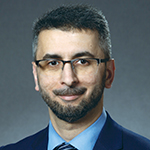Current prices are artificially high, say health system executives affiliated with the company
By JULIE MINDA
By 2024, the nonprofit drug company Civica RX plans to offer three different types of insulin to patients at a fraction of the price commanded by the three major pharmaceutical makers who have a corner on the market today.
The insulin makers now dominating the market have been increasing prices precipitously — and artificially — for over a decade; driving prices past the point of affordability for many insulin-dependent diabetics. According to a Rand Corp. study
published in 2020, not allowing for rebates and discounts, manufacturers' insulin prices in the U.S. were more than eight times higher than in 32 comparison nations.
That opens the door to Civica RX to disrupt the market to the benefit of consumers. The drug company was formed in 2018 by a group of philanthropies and health systems, including Catholic health systems. The ministry systems that have been governing members
of Civica from the outset are Catholic Health Initiatives, now CommonSpirit Health; Providence St. Joseph Health; SSM Health; and Trinity Health. Hospital Sisters Health System is a founding member.

Dredge
Carter Dredge is lead futurist of SSM Health and a board member of Civica. Dredge says as insulin prices have spiked, many people have been working on ways to make insulin affordable. "Civica created a vehicle to enable this to happen. We're bringing
people together, we're bringing companies together to solve problems. And we're bringing the scale needed to break into this market."
Mohammad "Mo" Kharbat, vice president of pharmacy services for SSM Health, says taking on insulin affordability "is the clearest example yet of why Civica was founded. Civica's mission is to make quality generic medicines accessible and affordable to
everyone. And Civica is going to great lengths to ensure this insulin will be available soon." Insulin will be available at a low price to anyone in the country who has a prescription, "and that will be huge," Kharbat says.

Kharbat
Kharbat says 20 years ago a vial of insulin that would last half a month cost $10 or $20. Now, that same vial costs about $300. Civica anticipates it can bring that cost down to $30 per vial.
Essential medication
According to the American Diabetes Association's Diabetes Care journal, 30 million-plus Americans have diabetes. In Type 1 diabetes, a person's pancreas can't make insulin, or enough insulin, a hormone
the body requires to use or store the glucose it gets from food. In Type 2 diabetes, the pancreas makes insulin, but, because of insulin resistance, the glucose builds up in the bloodstream instead of feeding cells.
Although Type 2 diabetes is sometimes managed with diet or oral medications, managing severe Type 2 diabetes may require insulin injection. Patients with Type 1 diabetes require regular subcutaneous insulin injections or an infusion from an insulin pump
to maintain blood sugar levels.
According to statistics from Civica, more than 8 million Americans rely on insulin. Most forms of insulin are injected via syringe into body fat. The frequency of injection and the amount and type of insulin needed depend on several factors including
blood sugar levels, the type of diabetes and a patient's daily diet and exercise. Insulin-dependent diabetics may test their blood sugar levels several times a day to determine how much insulin to inject and when.
Insulin products vary by how fast they begin to work, how quickly they peak and how long they remain effective. There are five categories of insulin, based on these characteristics: rapid-acting, regular or short-acting, intermediate-acting, long-acting
and ultra-long acting. Civica plans to make one long-acting and two rapid-acting insulins.
SSM Health's Kharbat says going without insulin can land diabetics in the emergency department. "It can be life-threatening to go without insulin" or to take an incorrect dosage. And there are debilitating and potentially life-threatening sequelae from
poor blood sugar control over longer periods of time that include poor wound healing, heart disease, circulatory and nervous system failures sometimes leading to amputation, kidney failure and blindness.
Market dominance
To promote widespread availability, the University of Toronto, which held the first patent on insulin, gave pharmaceutical companies the right to make the hormone and patent any improvements. Incremental changes to formulations allowed the for-profit manufacturers to
extend their patents, block the introduction of generics and ultimately raise prices well beyond the pain point. Currently three makers dominate the market — Eli Lilly, Novo Norodisk and Sanofi. Their formulations are the most commonly prescribed.
Kharbat explains that the Food and Drug Administration has two paths for companies to enter the insulin market: they can develop and patent a brand new formulation, or they can develop a "biosimilar" that has the same basic biological structure, efficacy
and safety as one of the currently available drugs. However, the process to complete the many stages to bring such drugs to market on either of the paths currently is too costly for for-profit companies to justify, especially since the dominant makers
can simply artificially lower their prices when the new entrant arrives, to wipe out its profits.
Such market barriers have meant no new competition, and thus high prices, says Dredge. A JAMA Internal Medicine study two years ago found that as many as 25% of insulin users skip doses or take less than prescribed due to high costs. People who
are uninsured or underinsured are hit especially hard. The problem is so severe that President Joe Biden in his State of the Union Address proposed price caps on insulin.
A SSM Health release on Civica's insulin investment posits insulin unaffordability as a health equity issue since people of color are more likely to be uninsured or underinsured than white people. According to research published in JAMA in 2019,
Blacks, Hispanics and Asians have higher rates of diabetes than whites.
Utility
Dredge said that Civica has engaged numerous philanthropists — including health care, family and individual foundations — through its own foundation to provide initial funds for insulin development. He says since
Civica is a nonprofit functioning as a member-funded utility, it does not have a profit incentive. So it does not shrink from the challenge of low margins and high upfront investment with no fast return.
Civica plans to partner with Indian company GeneSys Biologics to refine the formulations for the three insulins: glargine, which will be biosimilar and interchangeable with Lantus; lispro, which will correspond to Humalog; and aspart, which will correspond
to Novolog. Civica is building a pharmaceutical-manufacturing plant in Virginia that will produce the insulin as well as other Civica-branded drugs.
Kharbat says as a barrier to Civica's market entry, the dominant players in the insulin market may try offering sharp rebates on brand name insulin to pharmacy benefit managers.
However, Civica already has contracts with many of its member health systems and partnering nonprofit insurance companies to use the Civica insulin. That should enable Civica to quickly gain market share. Dredge notes that the mere presence of low-cost
options should drive prices down even for consumers not buying the Civica-branded drugs. That already is happening with many of the 50 drugs Civica produces. Insulin is the first drug Civica is producing that is not primarily for inpatients.
Price cut
Amber Starr, 40, of Shawnee, Oklahoma, was diagnosed with diabetes in 2013. She uses a long-acting insulin twice a day and a short-acting insulin periodically throughout the day. She says she would be thrilled if insulin
prices were to come down. She is unemployed and insured by Medicare. She does not have a supplemental Medicare Part D drug plan, so she must pay the approximately $150 weekly insulin cost out of pocket. She said that amount does not include the costs
for the pump, monitor, meter and test strips she requires.
On multiple occasions she has had to decide whether she should short her utility bills or buy less food in order to pay for her insulin and diabetes supplies.
She says for her and millions of others "this is a common struggle, and it gets harder each and every day."
Insulin pioneers wanted the drug to be widely available, affordable
When researchers completed breakthrough work in the development of insulin about a century ago, they tried to set the stage for the drug to be produced without profiteering.
According to information from the Science History Institute, in 1921, under the directorship of University of Toronto Professor John Macleod, diabetes researchers Dr. Frederick Banting and medical student Charles Herbert Best isolated insulin in research dogs producing diabetes symptoms that resolved with the injection of insulin. The researchers developed methods for excreting insulin from animals' pancreases for injection into human diabetics. The treatment helped control the humans' blood sugar levels.
According to a May 2017 article in The Lancet: Diabetes & Endocrinology, Banting did not put his name on the first insulin processing patent because he felt "'…that as a physician who had taken the Hippocratic oath, he could not be party to any patenting of a discovery.'" Macleod felt similarly.
The first application was in the name of Best and fellow researcher on the work James B. Collip. According to the Lancet article, neither Best, nor Collip, a PhD biochemist, faced any ethical dilemma and were named as inventors. For $1, Collip and Best transferred all rights, title, and interest to the governors of the University of Toronto, says the Lancet article. Banting, Best, Collip, and MacLeod all believed that insulin should be made as widely available as possible, without any barriers such as cost, that article notes.
In 1963, scientists chemically synthesized insulin. Today in the U.S. only laboratory-manufactured insulin — not insulin derived from animal organs — is prescribed to patients. According to Mohammad "Mo" Kharbat, vice president of pharmacy services for SSM Health, the dominant drug companies manufacturing insulin have successfully extended their patent protections by making improvements in their insulin products. That patent protection became a barrier to generic insulin and it has allowed the makers of brand name insulin to hyperinflate prices.
To manufacture competing insulin products, pharmaceutical manufacturers would have to make serious investments to overcome technology, manufacturing and logistical barriers, he says. These market entry barriers — or financial disincentives — led to a handful of products dominating the insulin market in the U.S. Kharbat says that since the Civica RX pharmaceutical company is a nonprofit, functioning as a health care utility, it does not have the same financial disincentives as for-profits, when it comes to addressing the barriers.
— LISA EISENHAUER